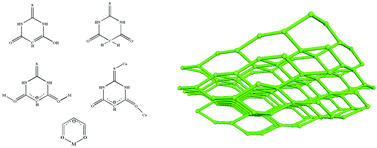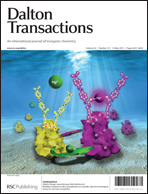Mg(ii)-induced second-harmonic generation based on bis-monodentate coordination mode of thiobarbiturate†
Abstract
Utilizing a SHG inactive ![[double bond, length as m-dash]](https://www.rsc.org/images/entities/char_e001.gif) C–CH–C
C–CH–C![[double bond, length as m-dash]](https://www.rsc.org/images/entities/char_e001.gif) O group and H2L− can be considered as a β-diketo derivative. H2L− shows a bis-monodentate coordination fashion and acts as a u2-bridge in the three complexes, which is different from the classical chelating fashion of β-diketo
O group and H2L− can be considered as a β-diketo derivative. H2L− shows a bis-monodentate coordination fashion and acts as a u2-bridge in the three complexes, which is different from the classical chelating fashion of β-diketo


 Please wait while we load your content...
Please wait while we load your content...